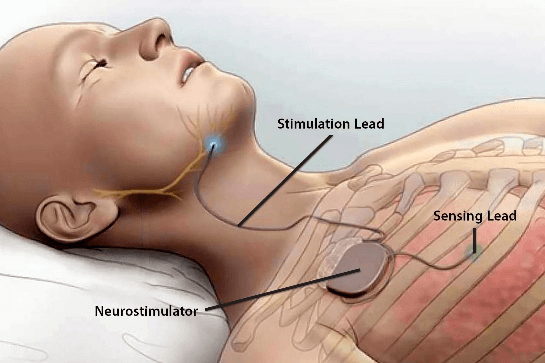CPAP AlternativesObstructive Sleep Apnea (OSA) is a sleeping disorder which results in breathing problem. It happens in the body when the airway is completely or partially blocked while a person is sleeping. If you have OSA disorder, your airway is blocked while you sleep because the soft tissue in the back of your throat relaxes. Each time it occurs, your brain may startle you awake so that you may restart your breathing. OSA manifests symptoms such as:

OSA can make you sleepy the next day and raise your risk for depression, high blood pressure, heart attacks, and stroke. A Continuous Positive Airway Pressure (CPAP) is a device which is used in the treatment for OSA. You have to wear a mask over your nose and mouth when using this machine. In order to prevent your airway from closing down as you sleep, the machine forces air through your mouth and nose. CPAP machines help lessen the risk of heart disease, lower blood pressure, and improve sleep and mood. Despite being beneficial, more over one-third of those who use CPAP discontinue using it. A CPAP machine is frequently abandoned because it is bulky, uncomfortable, or noisy. It occasionally has no effect on the symptoms of OSA. If you're not satisfied with CPAP, there are a some more treatment options for it. Treatments for Mouth BreathersMost people inhale and exhale through their lips and nose. Some OSA sufferers only breathe through their mouths while they sleep. Mouth breathing occurs when the nose is blocked by enlarged tonsils on both side of throat or adenoids, congestion, or a deviated septum. When using a CPAP machine, mouth breathing might cause dry throat and nose in the morning. Many people stop using CPAP therapy because of this unpleasant side effect. By wearing a chin strap with your nose mask or converting it to a full-face mask, you might feel relieve from this problem. If the person wants to add some moisture to the air he breathes, he can also use a CPAP machine with an integrated humidifier. Other non-CPAP methods to reduce mouth breathing include:
Treatments for sleep apneaOther OSA therapy alternatives if CPAP is not right for you include: Bilevel positive airway pressure (BiPAP), an oral appliance, nasal valve therapy, lifestyle modifications including weight loss or quitting smoking, and surgery to address an underlying cause of OSA are all examples of treatment options. What to do while traveling:
BiPAP machineBilevel positive airway pressure (BiPAP) therapy is an additional choice. You should wear a mask that forces pressurised air into your airways to keep them open, similar to CPAP. With CPAP, however, the pressure is constant during the entire breath. The pressure may be difficult for CPAP users to exhale against. There are two pressure settings on a BiPAP system. When you exhale, it is lower than when you inhale. You could find it simpler to exhale because of the lower pressure, particularly if you have breathing difficulties due to heart or lung problems. Oral AppliancesAn oral appliance is a simpler substitute for CPAP. It resembles the mouthguard you might wear when participating in sports. The FDA has approved more than 100 different types of oral appliances to treat OSA. These gadgets retain your tongue in place or advance your lower jaw. This lessens the likelihood that when you sleep, your tongue and the tissues of your upper airway would collapse and obstruct your airway. OSA sufferers with mild to moderate symptoms respond well to oral appliances. They work best when they are specially made for you. Devices that don't fit properly can exacerbate jaw issues and sleep apnea. You can be fitted with the device by a dentist with specialist training, and they can check on you later to see if it's improving your OSA. Surgery
Weight LossHaving excess weight or obesity can cause fat to collect around your neck and throat. That excess tissue could restrict your airflow while you sleep and result in sleep apnea. Even a 10% weight loss can lessen the effects of sleep apnea. The condition might possibly be cured by it. Losing weight is difficult. You can find the ideal mix of food adjustments and exercise methods with the assistance of your doctor to improve your OSA. You may be a candidate for bariatric surgery if diet and exercise are ineffective for helping you lose weight. Lifestyle ChangesThese simple changes to your routine could help you sleep better at night:
TakeawayThe typical treatment for OSA is CPAP, however it's not the only option. Ask your doctor if there are any alternatives, such as oral appliances or surgery, if you've tried a CPAP machine and it didn't work for you. Try to maintain healthy behaviours in addition to receiving OSA therapy. You can greatly improve the quality of your sleep by stopping smoking, losing weight, and exercising frequently.
Next TopicHindiLinks4u Alternatives
|
 For Videos Join Our Youtube Channel: Join Now
For Videos Join Our Youtube Channel: Join Now
Feedback
- Send your Feedback to [email protected]
Help Others, Please Share









